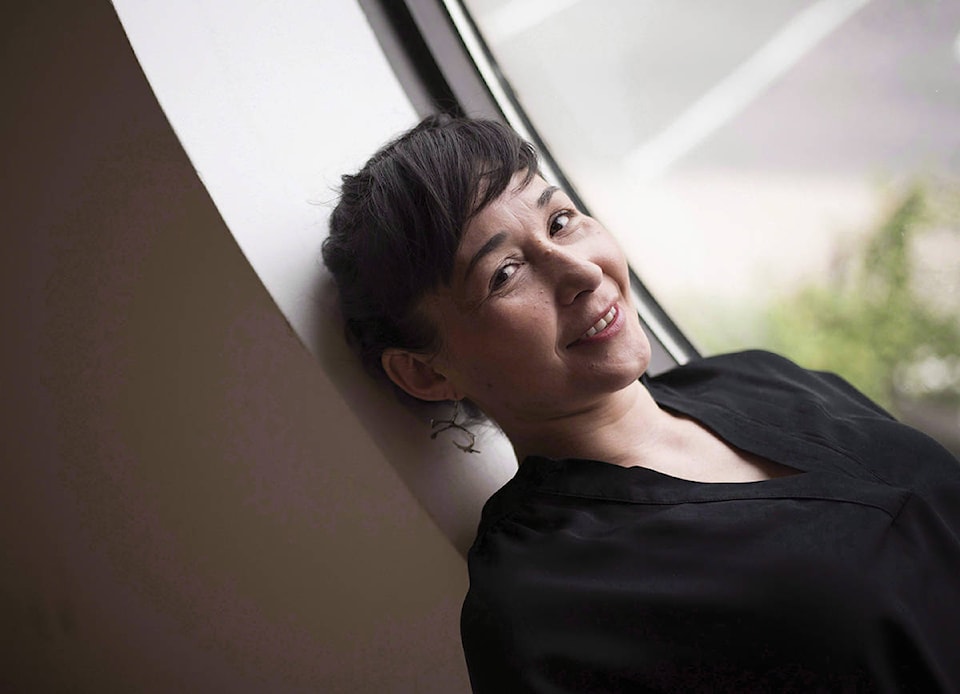TORONTO — As Kevin Loring becomes the first-ever director of Indigenous theatre at the National Arts Centre, he’ll be looking to help blaze a trail in a creative realm where he’s faced his share of roadblocks.
“For a long time, I would only get cast if there was specifically a native person in a role. For some people, it was very hard to see past the racial boundary,” said the award-winning playwright, actor and educator who is a member of the Nlaka’pamux Nation from the Lytton First Nation in British Columbia.
“There’s always … also been a biased perception of Indigenous actors that everybody faces once in a while that can be discouraging. It’s not an easy industry. It’s not always easy to stay in this industry and make this your living.”
Loring is slated to begin his role with the NAC on Oct. 16. The new department’s inaugural season in 2019 and 2020 will coincide with the Ottawa-based performing arts centre’s 50th anniversary.
The historic new post is one of several recent moves made by Canadian arts organizations to help bolster opportunities for Indigenous theatre artists. It also arrives at a time when the issues of cultural appropriation and diversity of representation have been on the front burner.
“I think that one of the big questions that we have to ask ourselves as Indigenous theatre artists is: ‘What is Indigenous theatre? What would be an Indigenous production … and how would you define that?’” said Loring, who won the 2009 Governor General’s Award for English Language Drama for the play Where the Blood Mixes, which examined the intergenerational effects of the residential school system.
“If somebody was doing a production of Macbeth and they want to cast Indigenous actors and there’s going to be an Indigenous director, I would say that that is something that we would be interested in programming because it is being presented through the lens of an Indigenous artist or director.
“Those kind of balancing acts, how do we determine what is what, and what is appropriate for us is telling, it’s going to be a bit of a dance for each specific case. “
Ontario’s Stratford Festival has enlisted a record of more than a dozen Indigenous artists this season, including actors and a voice coach. Reneltta Arluk made history in her Stratford debut as the first Indigenous person to direct at the festival. She helms the The Breathing Hole, a Arctic-set exploration of Indigenous history and climate change centred around the 500-year saga of a polar bear.
Arluk will begin her role as director of Indigenous arts at the Banff Centre for Arts and Creativity on Nov. 1. She’ll be looking to continue to build on the progress achieved at Stratford by bringing more Indigenous artists into the fold.
“This is about non-Indigenous and Indigenous organizations working together and that’s creating space and creating opportunity. It’s more than just putting an actor onstage,” said Arluk, who is of Inuvialuit, Dene and Cree descent.
“Positions like Kevin has at the NAC and I have at Banff, what we can then do is come in (and say:) ‘Let’s mentor the emerging artists, let’s do master classes. Let’s get more opportunity for the artists that have bigger vision. Let’s fill those spaces in the NAC and the Banff Centre so that when Stratford is asking for more actors and writers and designers we can say: “We’re right here.”’”
Keira Loughran, director of Indigenous workshops as part of the Stratford Festival Laboratory, has made a concerted effort to reach out to elders in the surrounding First Nations for input.
“This was time for us to stop and challenge ourselves on what do we actually know about Indigenous culture? What can we learn from it and how can it affect the work that we do, whether we’re working on Shakespeare, whether we’re creating original Indigenous work?” said Loughran.
“There’s an understanding that this culture will bring a different perspective and that that perspective in reconciliation has a sovereignty that needs to be respected, and so we just made space for it.
“One of the other things that I learned is that one of the founding principles is about hearing everybody, and you’ve got structures that allow everybody to have a voice.”
Loring has expressed a desire to broaden the reach of the NAC’s Indigenous theatrical offerings beyond Ottawa, proposing Vancouver, Iqaluit, Montreal and Toronto as potential locales for shows.
Like Loughran, he emphasized the desire to hear from the community on how they’d like to see the work of the department evolve.
“There are a lot of Indigenous actors coming out of school and getting training and they’re hungry for the work; so I think we’re in for a really exciting time.”
